Bees, butterflies, flies, beetles, and other pollinators are an essential part of any ecosystem, but they’re also incredibly important to home gardens. At least 75% of all flowering plants rely on pollinators for their reproduction, and without pollinators, these plants can’t set seeds or fruit. In vegetable gardens specifically, an absence of pollinators can reduce harvest yields or even cause plants like cucumbers, squash, and melons not to fruit at all!
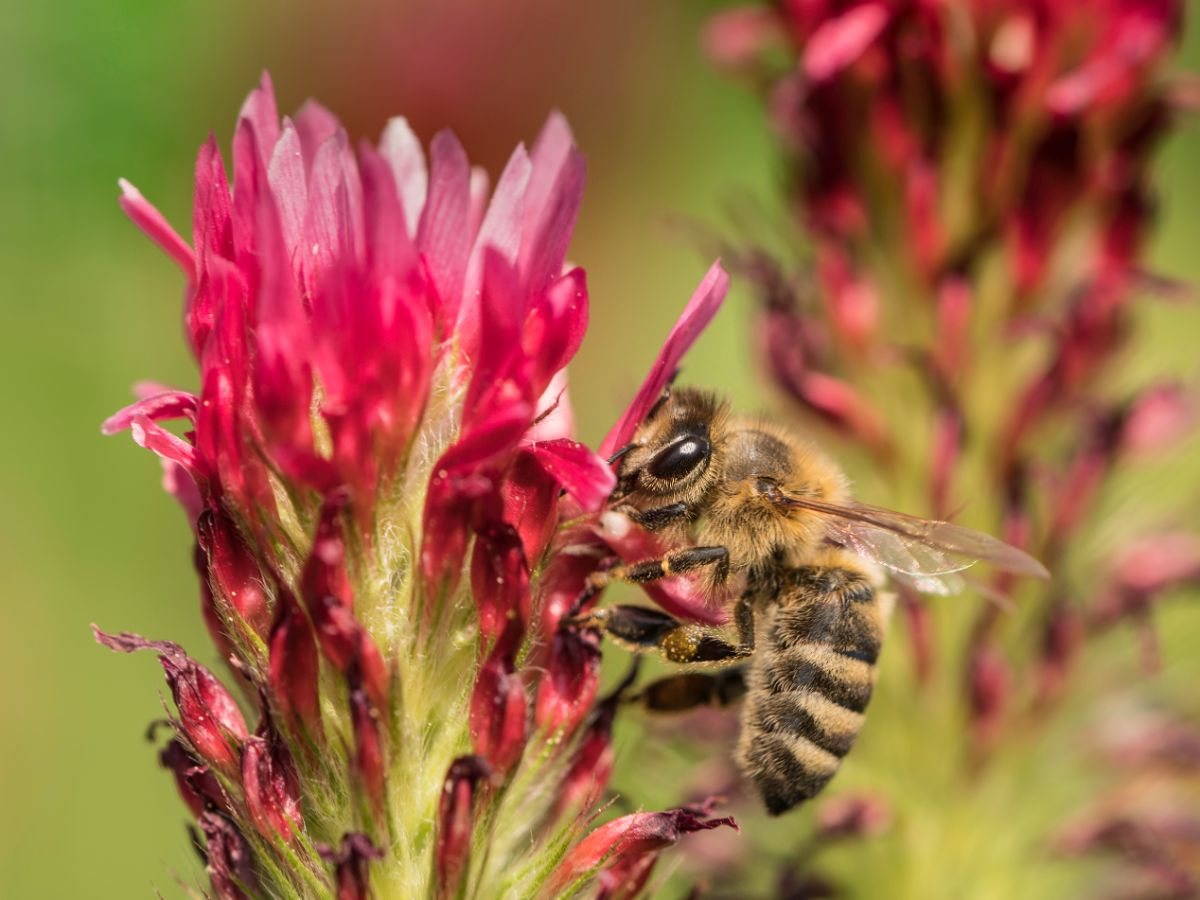
If you’ve ever struggled with cucumber vines that flower but don’t set fruit or your garden harvest is underwhelming, there’s a good chance you’re dealing with a lack of pollination issue. Choosing organic pest control methods is one way to encourage pollinators to visit your garden, but companion planting is another effective way to boost pollinator activity. In this guide, you’ll find the best pollinator-friendly companion plants that are certain to draw pollinators to your garden and help you grow a larger harvest this season!
Jump to:
20 best pollinator-friendly companion plants to boost your harvest
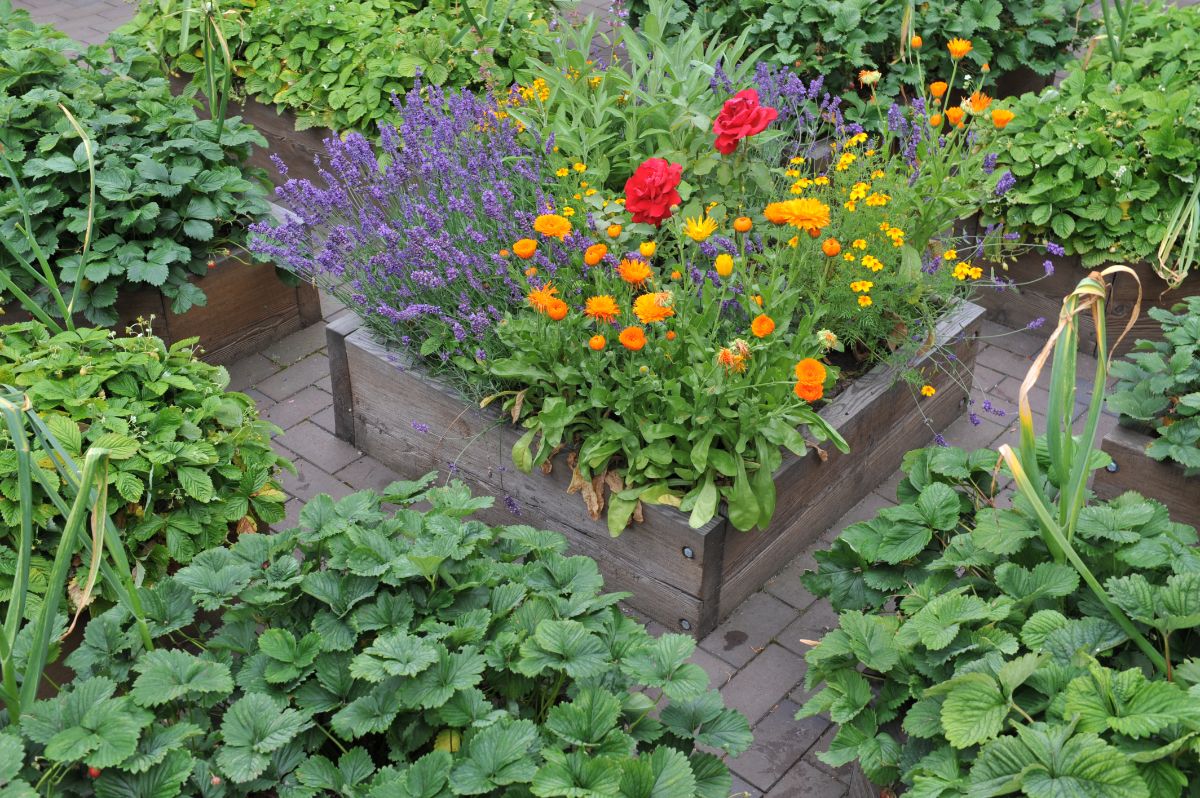
Below, you’ll find an assortment of herbs and flowers that are famous for their ability to attract pollinators. When grown in vegetable beds or container gardens, these companion plants will lure bees and other insects to your crops, ensuring they all get pollinated. Even better, most of these plants are very adaptable and can thrive in a range of growing conditions!
1. Dill
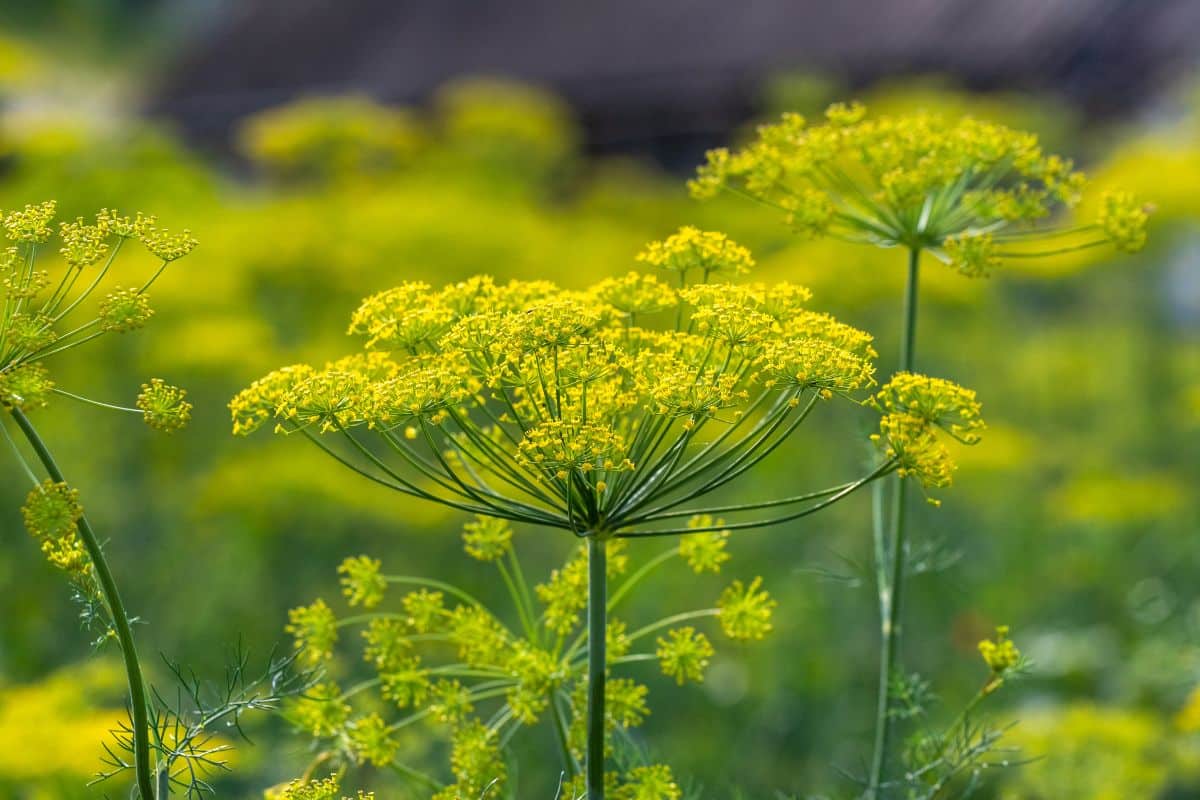
| Plant name: | Dill |
| Light requirements: | Full sun to part shade |
| Water requirements: | Moderate |
| Bloom time: | Summer |
| Top plant companions: | Corn, cucumbers |
If you want to increase pollinator activity in your garden and ensure that your fruiting crops always get pollinated, one of the absolute best plants to grow is dill. When allowed to flower, dill will attract bees and many other insects to your garden. Dill plants are also hosts for swallowtail butterflies, so be sure to plant some extra dill just for the hungry caterpillars.
One of the best things about using dill as a companion plant is that it already grows beautifully with most vegetable crops. Dill’s small size means it won’t compete with veggies for access to sunlight and fertilizer. While dill will often bolt in the summer heat, bolting causes this herb to flower, which is actually a good thing when it comes to attracting pollinators!
2. Chives

| Plant name: | Chives |
| Light requirements: | Full sun to part shade |
| Water requirements: | Moderate |
| Bloom time: | Mid-spring to early summer |
| Top plant companions: | Nightshades, strawberries |
Chives and other alliums have a strong and pungent aroma that can repel an assortment of garden pests. But if you allow chives to flower, they’ll also increase pollinator activity, and they can help nearby plants get pollinated. Bees, in particular, love chive flowers, but butterflies and other insects are sure to visit as well.
Like other alliums, chives have whimsical, ball-shaped flowers that come in purple, white, and occasionally pink. Beyond being a fantastic companion plant for pollinators, chive flowers and leaves are edible, and they make delicious toppings for salads and other dishes. Even if you just have a small container garden, you can still grow chives as these herbs thrive in pots!
3. Marigolds
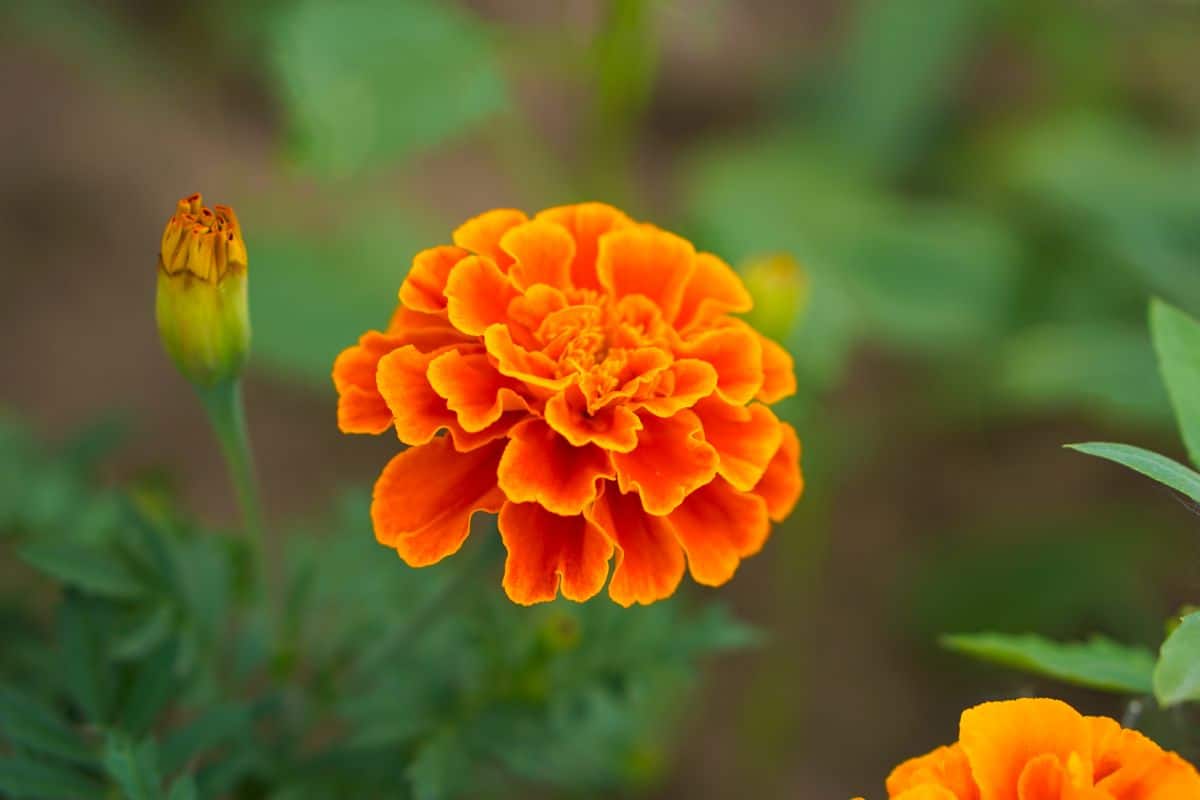
| Plant name: | Marigolds |
| Light requirements: | Full sun |
| Water requirements: | Moderate |
| Bloom time: | Early summer to fall |
| Top plant companions: | Cucumbers, gourds, squash, tomatoes |
Marigolds are easy to grow, flowering plants with bright orange, yellow or red flowers that can add color and interest to any vegetable garden. But marigolds are more than just ornamental. Bees, in particular, adore marigold blooms, and interplanting marigolds with your veggies can increase your harvest of gourds, squash, cucumbers, and other plants too.
Marigolds are long-season bloomers, flowering from early summer to the hard frosts of fall. That means that no matter when your vegetables need to be pollinated, marigolds will have pollen and nectar ready to entice any visiting insects. For smaller garden plots and container gardens, try out dwarf marigolds!
4. Sunflowers
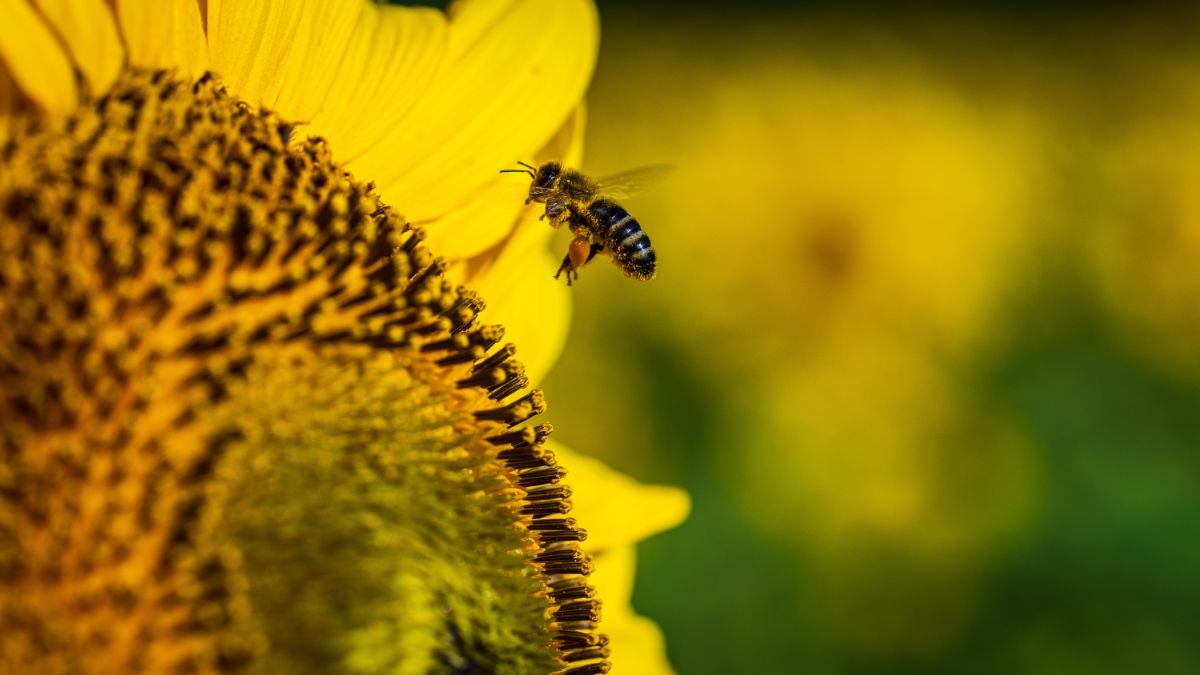
| Plant name: | Sunflowers |
| Light requirements: | Full sun |
| Water requirements: | Moderate |
| Bloom time: | Summer to fall |
| Top plant companions: | Tomatoes, corn, squash, cucumbers |
Sunflowers are versatile plants that can be grown in ornamental or edible gardens. When allowed to mature, sunflowers produce a profusion of edible seeds that can be roasted as a snack, or the entire sunflower head can be cooked on a grill. Sunflowers also make stunning cut flower displays, and they are commonly used in bouquets.
When it comes to companion planting, sunflowers will grow well with many other plants, including beans, squash, and corn. Part of the reason why sunflowers are such great plants is due to their large flowers, which are easy for bees, butterflies, and other pollinators to land on. If you have a smaller garden space, you may want to try out dwarf sunflowers or brightly colored Mexican sunflowers.
5. Zinnias
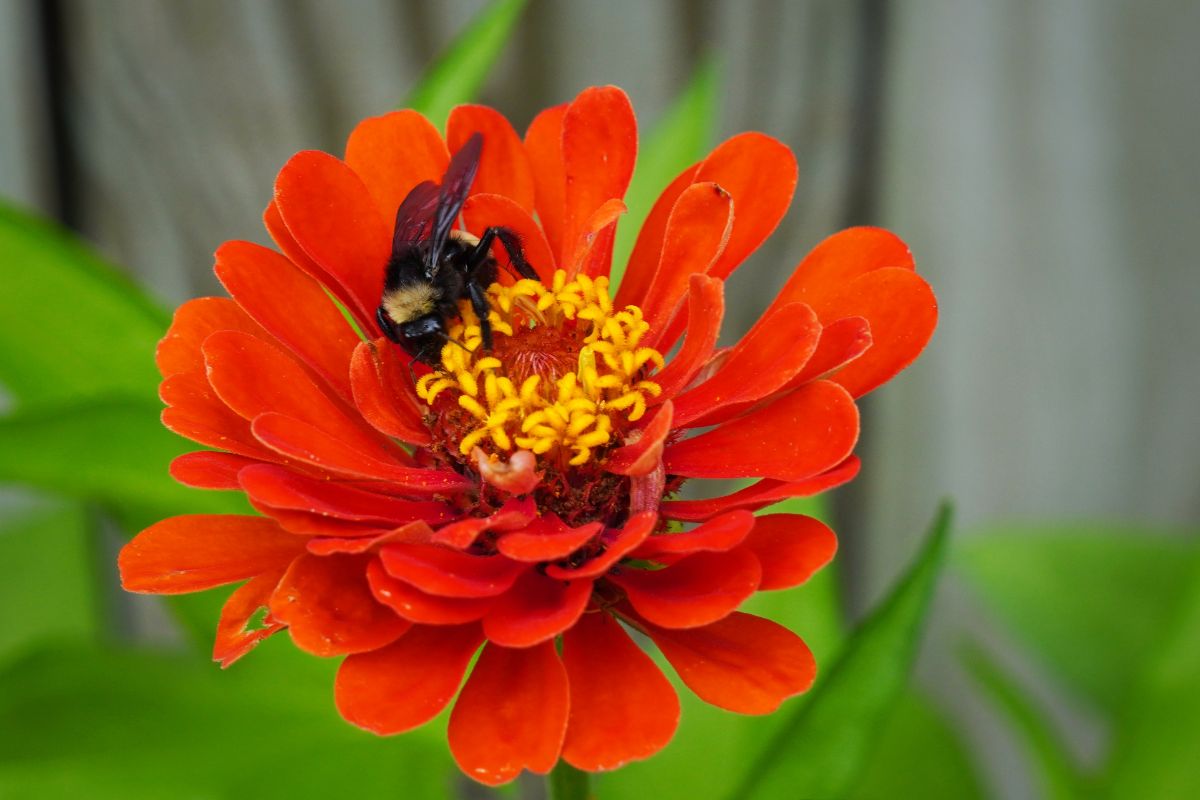
| Plant name: | Zinnias |
| Light requirements: | Full sun to part shade |
| Water requirements: | Moderate |
| Bloom time: | Mid-summer to fall |
| Top plant companions: | Tomatoes, cucumbers, peppers, melons |
Like marigolds, zinnias are often slipped into vegetable gardens to add color and attract pollinators as well. Zinnias come in both tall and dwarf sizes and range in height from approximately 1 to 4’ tall. You can also find zinnias in an assortment of colors, including orange, pink, white, yellow, and red.
When used as a pollinator plant, zinnias are especially alluring to bees and bumblebees, but other insects will visit zinnias blooms too. To get the most benefits out of zinnias, choose zinnia varieties with single blooms and stay away from double-bloom cultivars. Double-bloom zinnias have more concealed flower centers, which makes them less useful for pollinators.
6. Clover
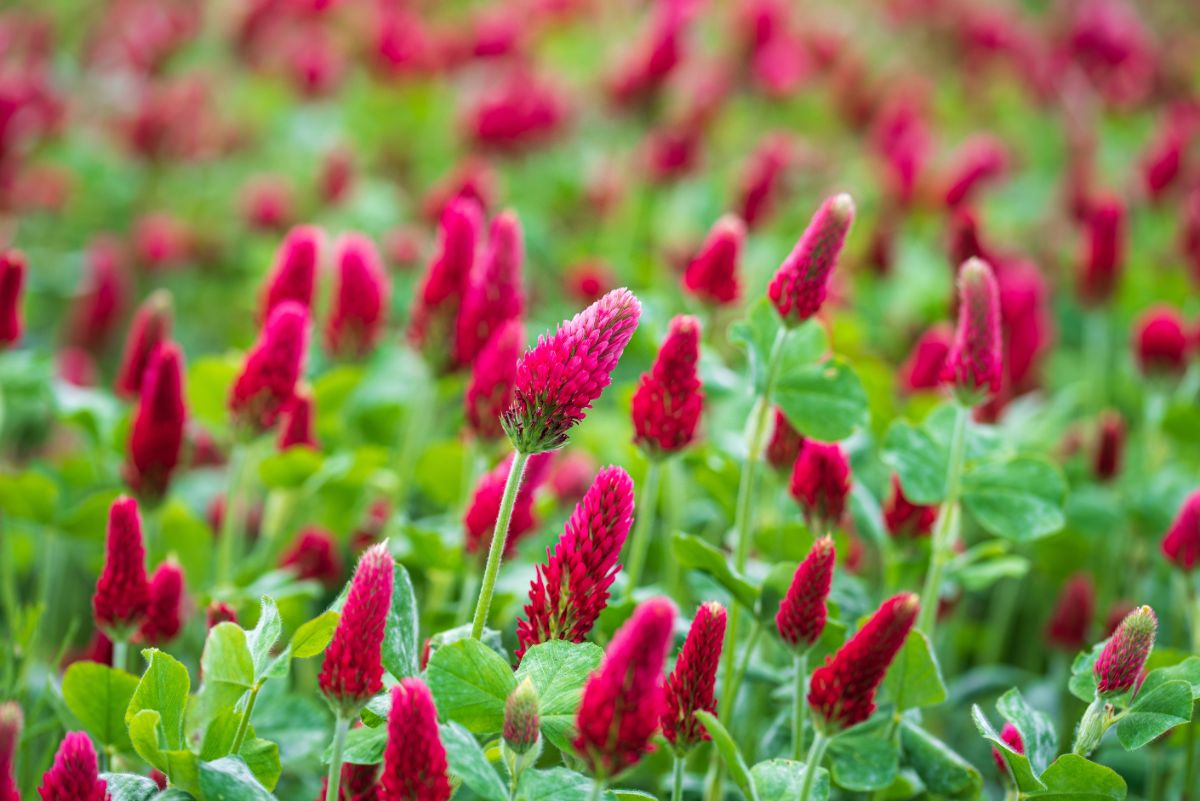
| Plant name: | Clover |
| Light requirements: | Full sun to part shade |
| Water requirements: | Moderate to low |
| Bloom time: | Spring to early fall |
| Top plant companions: | Squash, berries, nightshades |
Most gardeners strive to keep clover out of their gardens, but clover flowers can help pollinators and enhance vegetable harvests too. While you may not want to deliberately sow clover in your garden beds, overseeding your lawn with white Dutch clover seeds can raise pollinator populations on your property. In turn, your vegetable garden will be visited by more bees and butterflies, and squash, blueberries, strawberries, and other plants will yield bigger harvests as a result.
Beyond attracting pollinators, clover can also improve your garden soil with its nitrogen-fixing roots. In fact, some clovers are actually intentionally sown in vegetable gardens as cover crops to improve soil fertility. White, red, and crimson clovers are all commonly grown for soil improvement, but if you’re using clovers in vegetable gardens, you may want to select annual varieties so they won’t come back year after year as weeds.
7. Basil
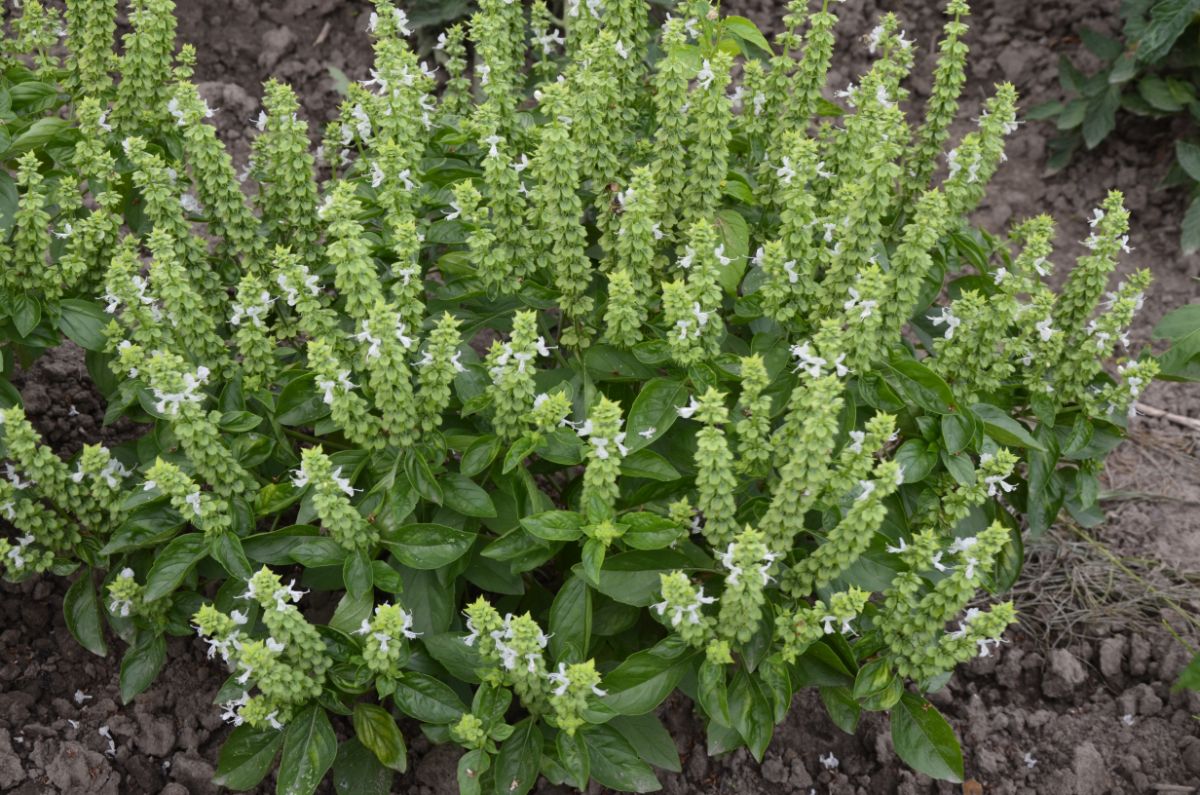
| Plant name: | Basil |
| Light requirements: | Full sun to part shade |
| Water requirements: | Moderate |
| Bloom time: | Summer to fall |
| Top plant companions: | Nightshades |
Basil is often touted as a companion plant for vegetables because it can repel pests, but basil flowers are also highly attractive to bees and other beneficial insects. Grow basil beside your tomatoes, and you may just increase your tomato harvest. Basil also works well as a companion plant for peppers and other nightshades, but it doesn’t grow well with cucumbers.
Whether you keep a large garden or just a few potted plants, you’ll always have room for basil because it is a compact grower. Basil leaves can be harvested throughout the season, but if you want your plants to produce flowers for pollinators, you should avoid pruning your plants too frequently. Genovese basil is a popular basil choice for vegetable gardens, but you can also try out other tasty and colorful basil varieties like Thai basil and purple basil.
8. Thyme
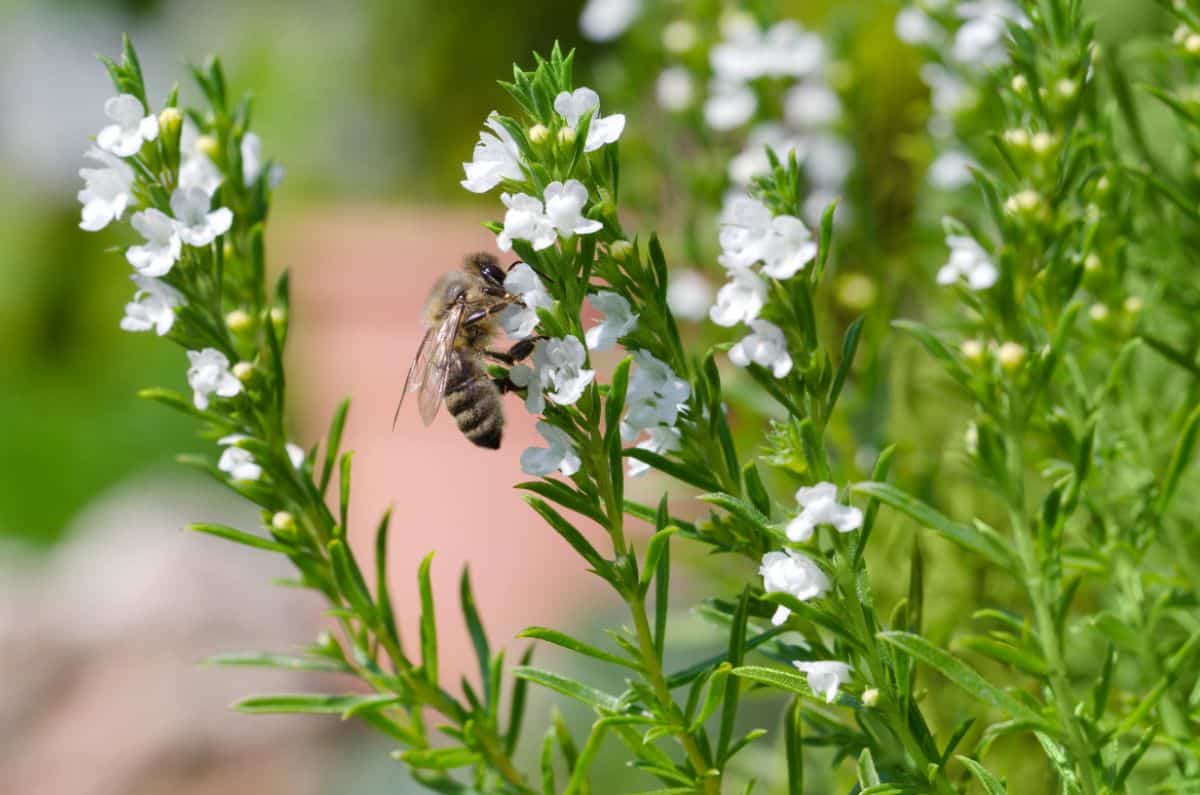
| Plant name: | Thyme |
| Light requirements: | Full sun |
| Water requirements: | Low |
| Bloom time: | Spring to summer |
| Top plant companions: | Nightshades, berries |
Thyme is another aromatic herb that’s good for natural pest control. But when thyme is allowed to flower, it’s always a hit with bees and other beneficial insects. Growing thyme near your veggies can prevent under-pollinated plants while creeping thyme varieties can also be used as a low-maintenance groundcover to suppress weeds.
Thyme doesn’t need a lot of water, so it generally doesn’t grow well with water-loving plants like cucumbers unless you keep your thyme in a pot near cucumber vines. Thyme is. however, a perfect partner for nightshade plants like tomatoes, and it also grows well with berries. For more color and flavor options, try out less well-known thyme varieties like lemon thyme, orange balsam thyme, and caraway thyme.
9. Mint
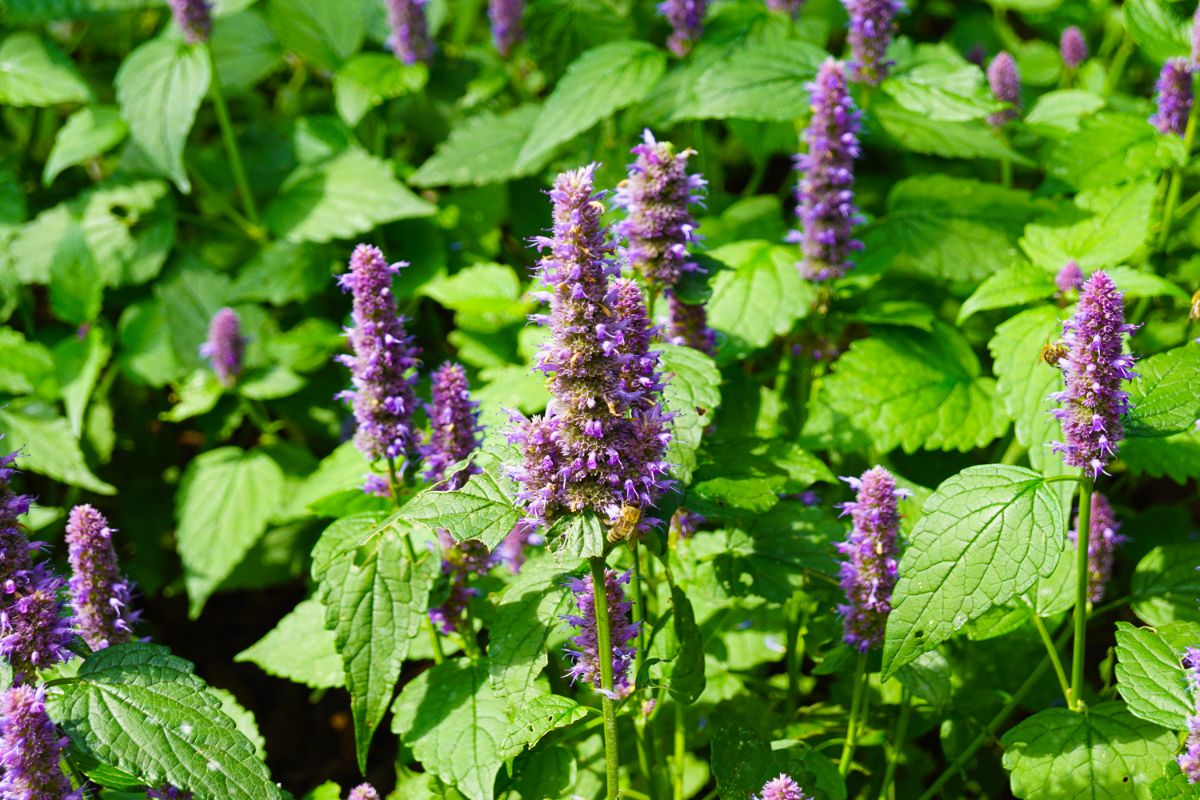
| Plant name: | Mint |
| Light requirements: | Full sun to part shade |
| Water requirements: | Moderate |
| Bloom time: | Summer to early fall |
| Top plant companions: | Corn, melons, squash |
Mint is a vigorously growing plant, which makes some gardeners reluctant to plant it in their beds. However, mint offers a lot of benefits to the organic grower, including pest protection and increased pollination rates. One way to work around mint’s spreading nature is to keep mint in pots placed strategically throughout your garden beds.
While we mostly cherish mint for its flavorful leaves, bees, and other pollinators love mint flowers, so don’t prune away all the blooms on your mint plants. Peppermint is one common type of mint to grow in home gardens, but you can also try out other mint cultivars like chocolate mint, mojito mint, and apple mint. If you’ve ever had squash and other cucurbits plants fail to fruit, growing mint nearby may just be the solution you’ve been looking for!
10. Cosmos

| Plant name: | Cosmos |
| Light requirements: | Full sun |
| Water requirements: | Moderate |
| Bloom time: | Mid-summer to fall |
| Top plant companions: | Nightshades, pumpkins, cucumbers, squash |
Cosmos are commonly grown as ornamental flowers, and they are a favorite plant to keep in cutting gardens. But beyond their beauty, cosmos are also a top pollinator plant, and they are a favorite among bees, butterflies, and various types of flies. Even if you want to grow cosmos for cut flowers, you can still use these plants as companion plants for pollinators, as picking cosmos flowers encourages the plant to produce even more blooms!
Cosmos come in various shades of pink and white, which can add a vibrant pop of color to any outdoor space. These plants grow best in moist soil with a relatively neutral pH, which just so happens to be the conditions that most vegetables prefer too. Tomatoes and other nightshades, as well as pumpkins, are the top veggies to grow near your patch of cosmos.
11. Lavender
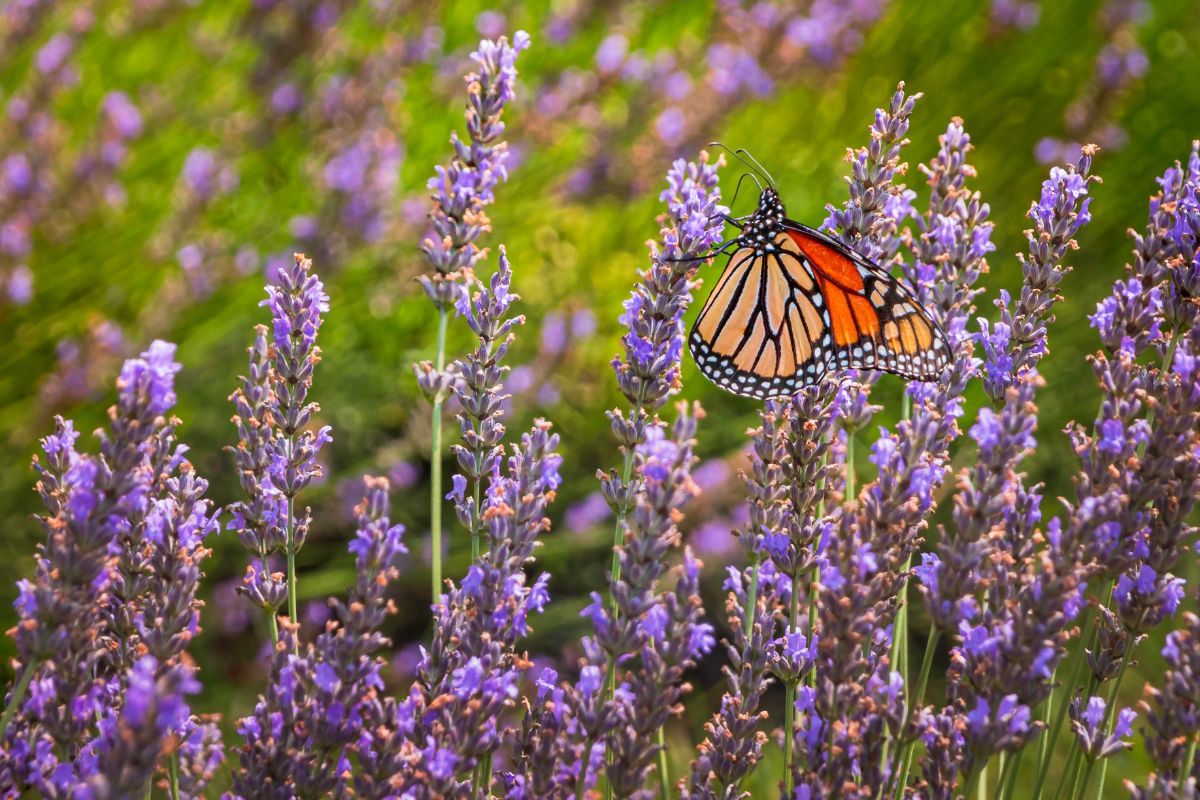
| Plant name: | Lavender |
| Light requirements: | Full sun |
| Water requirements: | Low |
| Bloom time: | Summer |
| Top plant companions: | Nightshades, squash, fruit trees |
Lavender is mostly grown for its fragrant leaves and purple flowers, which can be used in crafting or beauty care products. But lavender is also a pollinator-friendly herb, and some varieties of lavender are edible for humans as well. Full-grown lavender maxes out at around 2’ tall, making this plant a good size for both garden beds and container growing.
As a companion plant, lavender will attract many beneficial insects to your garden, but lavender grows best in slightly drier soil. For this reason, you may not want to grow lavender with moisture-loving plants and, instead, plant it near squash, nightshades, or fruit trees. Growing lavender beside a small orchard of peaches or apples may take your fruit harvest to the next level and help you get baskets full of the most luscious homegrown fruit!
12. Sage

| Plant name: | Sage |
| Light requirements: | Full sun to part shade |
| Water requirements: | Low |
| Bloom time: | Early summer |
| Top plant companions: | Nightshades, berries |
Sage has a rich and heady fragrance that can repel an assortment of garden pests, but bees and other pollinators always swarm sage flowers when the plant begins to bloom in early summer. Like other Mediterranean herbs, sage prefers well-draining soils, and it doesn’t need a lot of moisture. However, sage is still a fantastic companion for plants in the nightshade family, as well as many types of berries.
Culinary sage usually has grayish-green leaves that have a lot of ornamental appeal. But if you’d like to sow even more color in your garden, you may want to experiment with purple or tricolor sage cultivars. Full-grown sage plants max out at around 3’ tall, but they can still be grown in container gardens as long as you choose a large enough pot for your sage.
13. Sweet peas
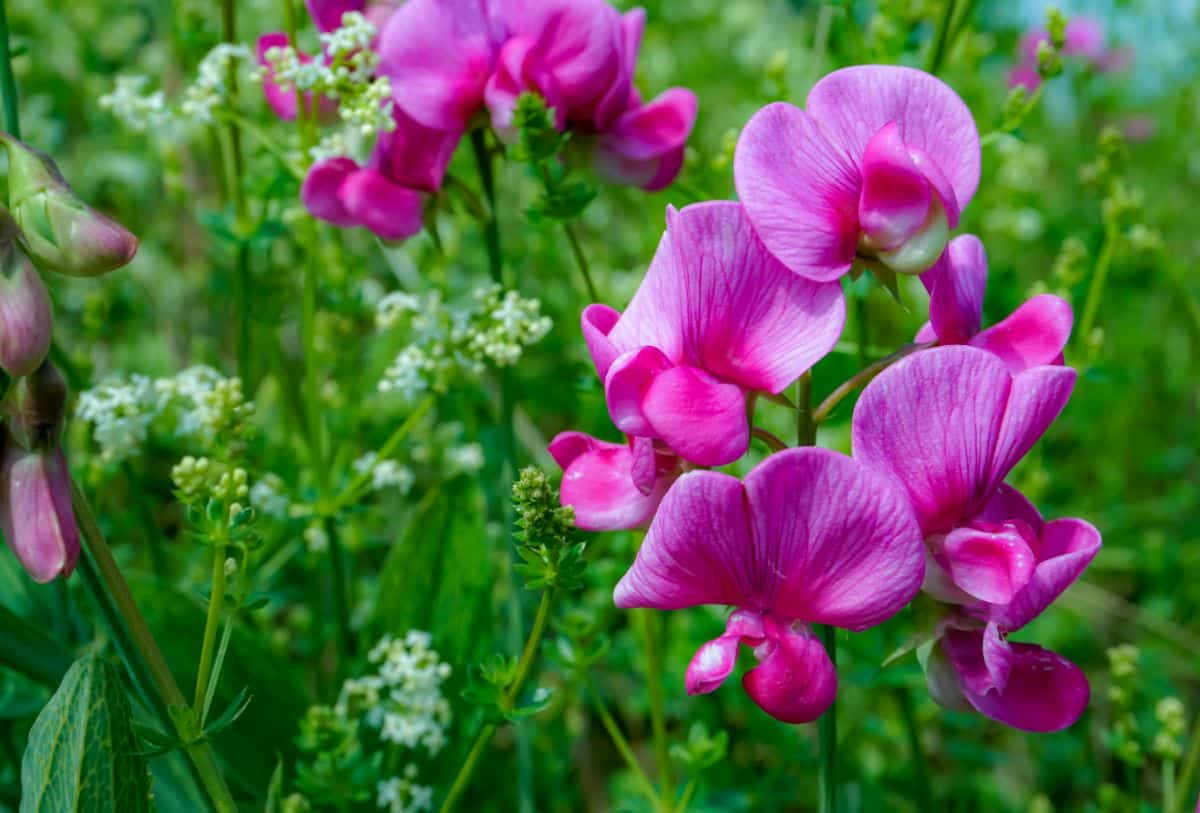
| Plant name: | Sweet peas |
| Light requirements: | Full sun |
| Water requirements: | High |
| Bloom time: | Spring, fall |
| Top plant companions: | Cucumbers |
Sweet peas are springtime favorites that uplift gardens with their showy displays of pink, purple, blue, and white blooms. Most often, gardeners grow sweet peas for their aesthetic appeal or to use in cut flower arrangements, but sweet peas can also be included in vegetable gardens to tempt pollinators to stop by. Just keep in mind that sweet peas are cool-weather plants, so they won’t be as beneficial for vegetables that flower during the peak of summer.
Sweet peas are usually planted outdoors in spring, but you can also plant sweet peas in mid-summer and get a second flush of sweet pea flowers in autumn. One benefit of growing sweet peas in vegetable gardens is that these climbing plants can take full advantage of any trellising that you’ve already installed for vining veggies like beans and peas. Aside from other legumes, sweet peas are particularly helpful companion plants for cucumbers.
14. Bachelor buttons

| Plant name: | Bachelor buttons |
| Light requirements: | Full sun |
| Water requirements: | Moderate |
| Bloom time: | Spring to fall |
| Top plant companions: | Most vegetables |
Also known as cornflowers, bachelor buttons are prized for their intensely colored blooms that come in various shades of blue, purple, pink, and white. Another long-season bloomer, bachelor buttons begin to flower in late spring to early summer, but they keep flowering right through fall. So, no matter what vegetables you keep in your garden beds, growing bachelor buttons nearby is always a great idea!
While bachelor buttons have plenty of ornamental appeal, their flowers are also edible and commonly used as salad toppers and garnishes. Bachelor buttons are also sometimes used to make homemade dyes, and the flowers are also easy to press or display in cut flower arrangements. Even if you’re new to gardening, you should have success growing bachelor buttons as these easygoing plants sprout readily from seed!
15. Borage

| Plant name: | Borage |
| Light requirements: | Full sun to part shade |
| Water requirements: | Moderate |
| Bloom time: | Spring to fall |
| Top plant companions: | Nightshades, cucumbers, pumpkins, strawberries |
Borage and bachelor buttons are sometimes blended together in edible flower mixes intended for vegetable gardens. But while borage leaves and flowers are edible, these plants are also top picks for pollinators, and they’re especially favored by bees. Borage’s distinct, star-shaped flowers come in a vivid, periwinkle blue color, and they bloom readily from spring through fall.
Like bachelor buttons, borage is an ultra-easy-to-grow plant, and it’s very quick to sprout from seed. Often, borage is recommended as a companion plant for tomatoes as it can help repel the dreaded tomato hornworm. But borage will also grow nicely beside other veggies, including cucumbers, pumpkins, and strawberries.
16. Nasturtiums

| Plant name: | Nasturtiums |
| Light requirements: | Full sun to part shade |
| Water requirements: | Moderate |
| Bloom time: | Summer to fall |
| Top plant companions: | Cucurbits |
Nasturtiums are popular plants to grow in vegetable gardens since they are entirely edible. Nasturtiums’ trumpet-shaped orange and yellow flowers make bewitching salad toppers, while the plants’ leaves have an intriguing, peppery flavor that can add complexity to sandwiches and salads. Even nasturtium seeds are a treat, and they can be pickled just like capers!
As a companion plant, nasturtium is commonly used to control pests, and its fragrance can repel or distract numerous insects, like aphids and whiteflies. However, hummingbirds and other pollinators love nasturtium flowers, and growing these plants near crops like cucumbers and pumpkins will increase the pollination rates of your cucurbit flowers. What’s more, climbing-type nasturtiums can be trained to climb up cucumber trellises, while mounding-type nasturtiums grow so compactly that you can keep them in pots on a small patio!
17. Bee balm

| Plant name: | Bee balm |
| Light requirements: | Full sun to part shade |
| Water requirements: | Moderate |
| Bloom time: | Summer |
| Top plant companions: | Tomatoes, squash |
Bee balm is a classic choice for pollinator gardens as its spiky red to purple flowers are a favorite of bees, hummingbirds, and other wildlife. But while you may love growing bee balm just for their stately flowers, you can get even more benefits from these plants by keeping them near your veggies. As a companion plant, bee balm grows well with tomatoes, squash, and other larger crops; however, bee balm is quite tall, and it may overshadow lower-growing plants.
One thing to keep in mind with bee balm is that this plant is a member of the mint family, and it can spread very vigorously if left unchecked. One way to avoid spreading bee balm is to keep your plants in pots. Another option is to deadhead spent blooms so they don’t go to seed.
18. Yarrow
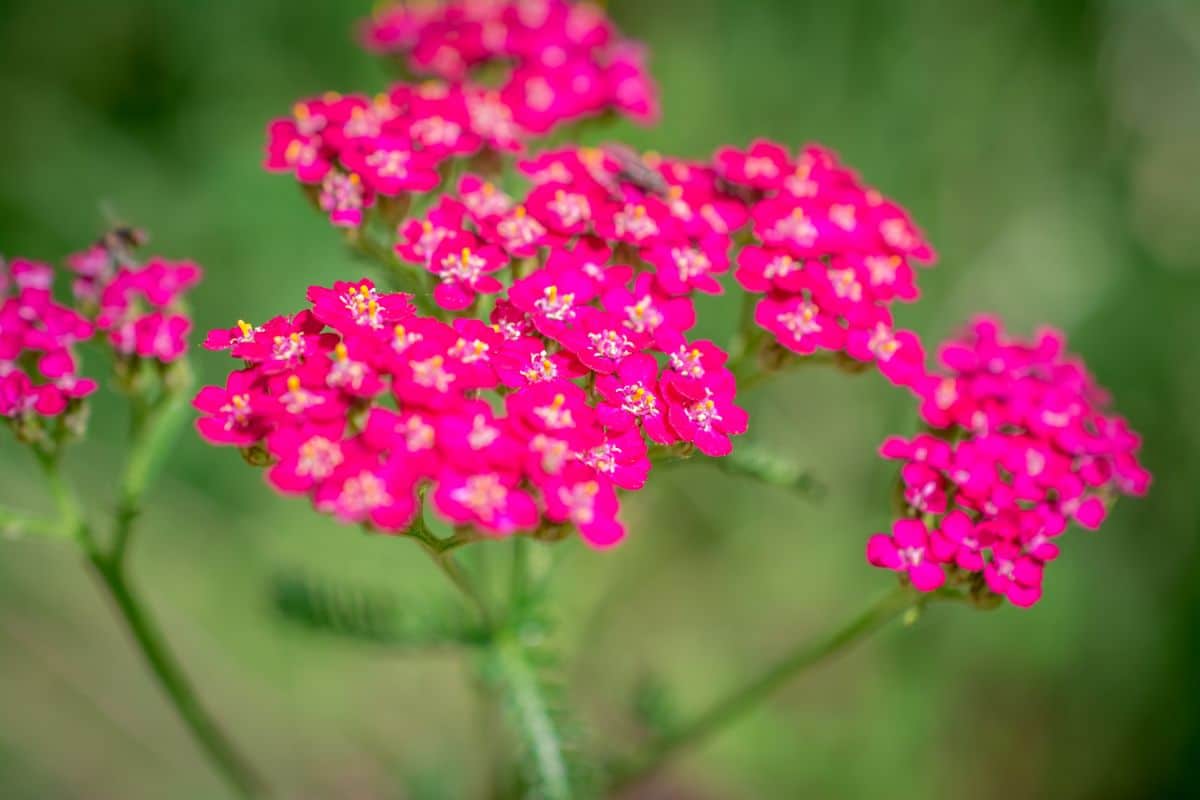
| Plant name: | Yarrow |
| Light requirements: | Full sun to part shade |
| Water requirements: | Moderate to low |
| Bloom time: | Spring to fall |
| Top plant companions: | Blueberries, strawberries, tomatoes |
Native to Europe, North America, and Asia, yarrow is commonly grown in wildflower and pollinator gardens, but you may be able to find this plant growing in the wild too. Most often, you’ll find yarrow with white flowers, but there are also cultivars with yellow, orange, and pink blooms. In gardens, yarrow is a magnet for all sorts of beneficial insects, but this plant also makes a wonderful cut flower, and it dries beautifully in preserved displays as well.
Yarrow is the type of plant that you really can’t go wrong with. Yarrow can thrive in sandy or poor soils, but it will grow even better in rich vegetable gardens, and it’s so hardy that it can grow in salty areas and in regions as cool as Zone 3. Yarrow can be susceptible to mildew issues, so it may not be a good companion for cucurbits, but it is a perfect partner for plants like tomatoes, blueberries, strawberries, and fruit trees.
19. Calendula
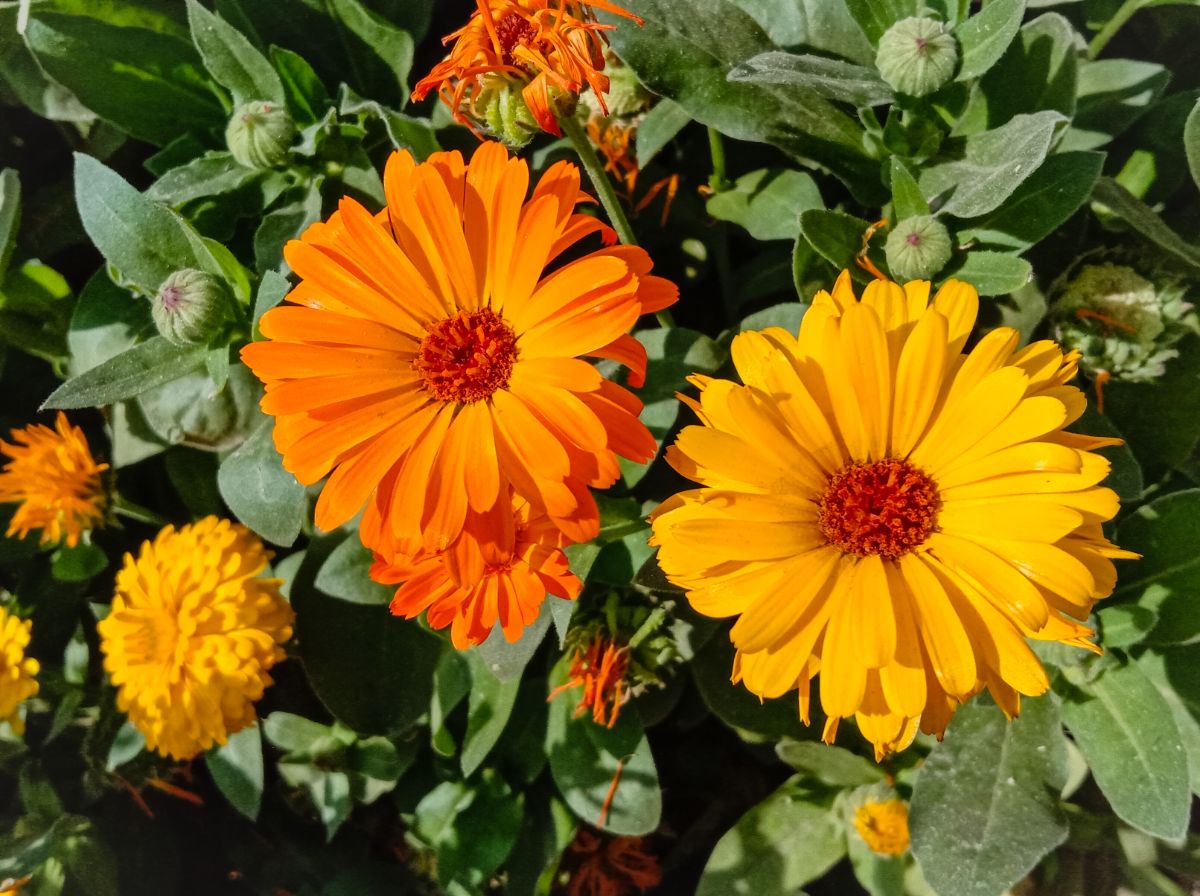
| Plant name: | Calendula |
| Light requirements: | Full sun to part shade |
| Water requirements: | Moderate |
| Bloom time: | Summer to early fall |
| Top plant companions: | Cucumbers, strawberries, tomatoes |
Calendula has cheerful, daisy-like flowers that bloom from spring to fall. Most calendula have orange to yellow blooms, but you can find calendula in shades of apricot and white. Calendula is most classically known as a medicinal plant, and it can be used to make homemade dyes, but calendula blooms are also excellent sources of nectar for butterflies, bees, and lesser-known pollinators like hoverflies.
Full-grown calendula plants only reach about 1’ in height, which makes them easy to slip in between smaller veggies or grow in potted gardens. Due to the increase in pollinator activity, cucumbers, tomatoes, and strawberries can all produce heavier harvests when grown near calendula plants. But calendula is such an easygoing flower that it can also grow well beside other veggies like lettuce and asparagus.
20. Sweet alyssum

| Plant name: | Sweet alyssum |
| Light requirements: | Full sun to part shade |
| Water requirements: | Moderate |
| Bloom time: | Spring, fall |
| Top plant companions: | Nightshades, fruit trees |
Sweet alyssum is a low-growing, sprawling annual that’s often used as a spiller element in container gardens. However, this plant also works well in inground gardens where it can form a low-maintenance, seasonal groundcover. With clusters of purple and white flowers, sweet alyssum has a dainty look that can’t help but draw the eye… and pollinators too!
Sweet alyssum flowers are best in cooler weather, and their blooms may fade during the summer heat. While this makes sweet alyssum less beneficial as a companion plant for summer blooming veggies, sweet alyssum flowers again in autumn, providing an encore of pollen and nectar for beneficial insects. Try out sweet alyssum with tomatoes or other nightshades or grow it near your fruit trees and wait for the pollinators to arrive!
Summary
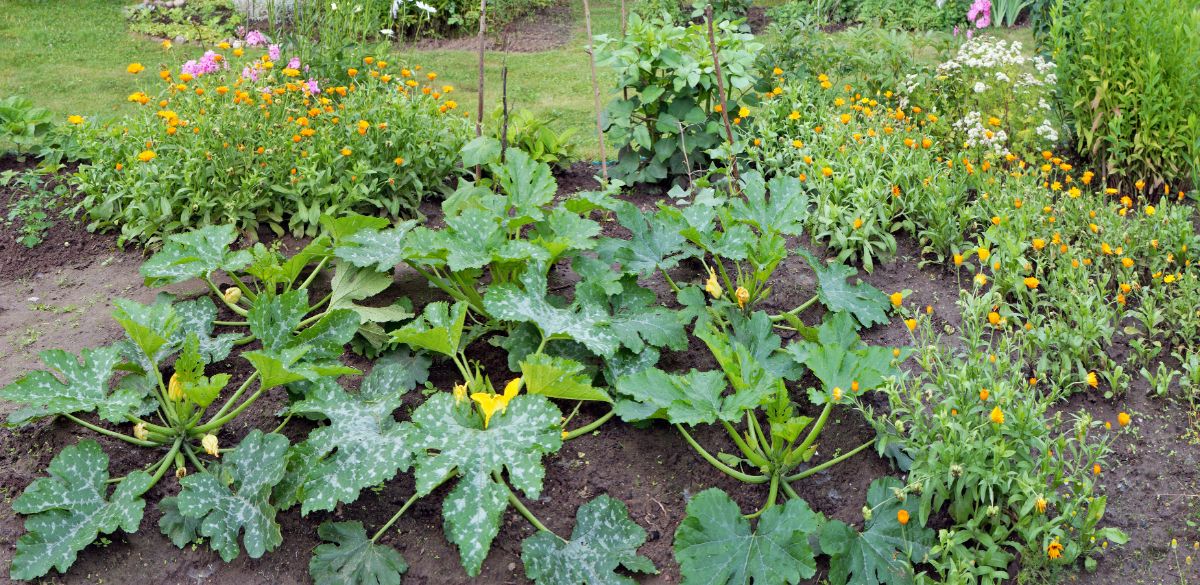
Companion planting is a handy technique that’s particularly useful for organic gardening. Not only do the right companion plants attract pollinators, but they also keep pest insects away and limit the need for pesticides. To learn more about how to use companion plants for pest control purposes, see our full guide on pest-repelling plants here.

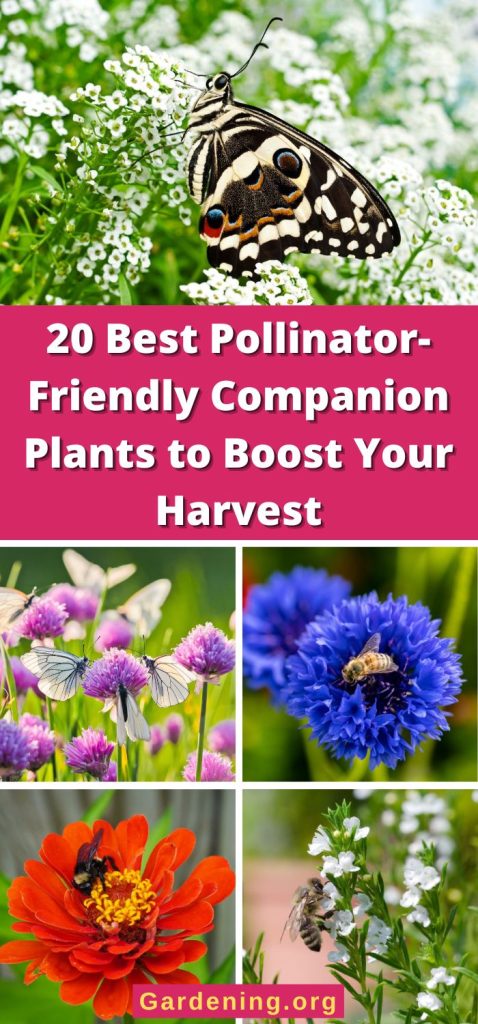
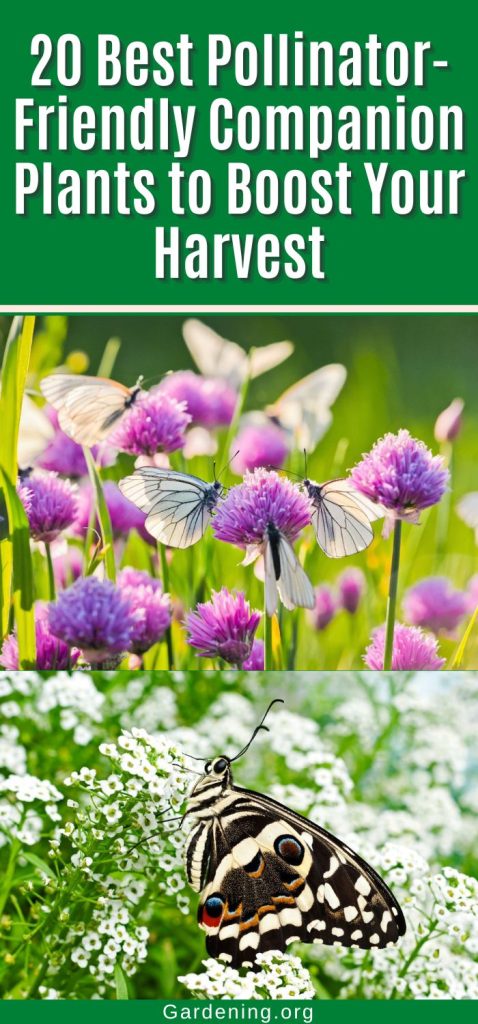
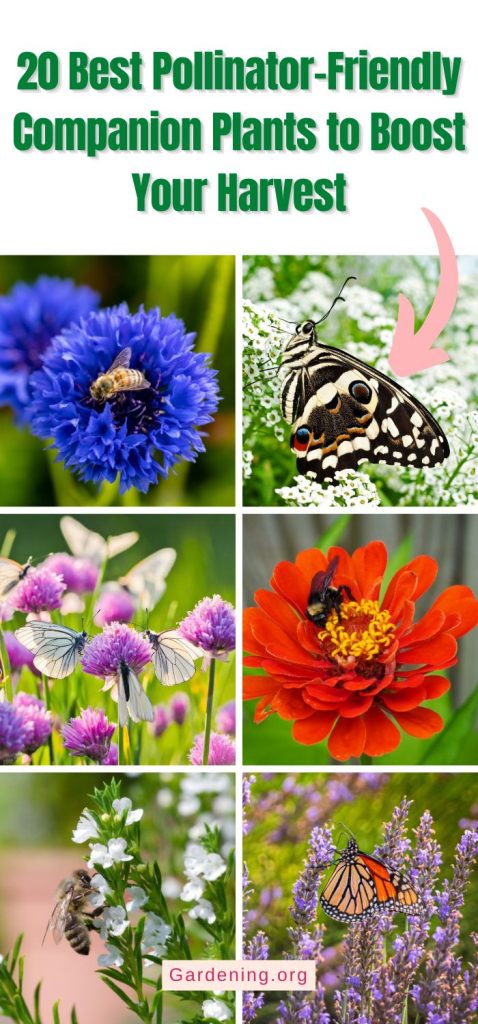
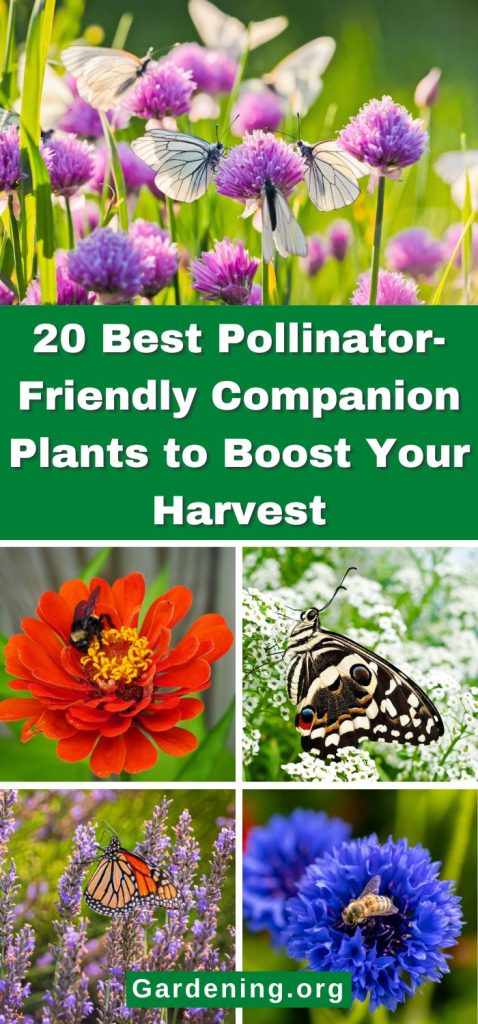

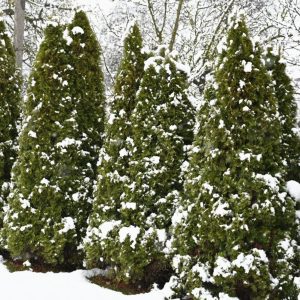

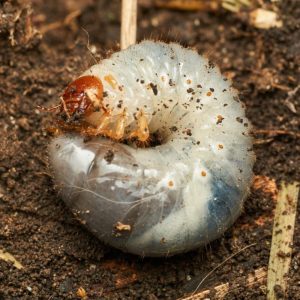
Leave a Reply